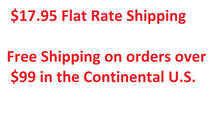Reverse Osmosis Systems
|
The Reverse Osmosis water treatment process removes the widest spectrum of contaminants of any water treatment process. Although Reverse Osmosis sounds complex, it’s really a very simple and straight forward water filtration process. And it's not a new process -- reverse osmosis (RO) systems originally were developed in the 1950’s, with U.S. Government funding, as a method of desalinating sea water. Today, reverse osmosis epitomizes state-of-the-art in water treatment technology and has earned its reputation as probably the most effective method to filter water. It's used by most water bottling plants and by many industries that require ultra-refined water in manufacturing. This advanced technology is now available for drinking water filtration in your home or office. |
|
Reverse Osmosis is a process in which dissolved inorganic solids (such as salts and other contaminants) are removed from a solution (such as water). This is accomplished by household water pressure pushing the feed water through a semi permeable membrane. The membrane (which is about the thickness of cellophane) allows only the water to pass through, but not the impurities or contaminants.
The contaminants left behind are automatically diverted to a waste drain so they don't build up in the system as with conventional filtering devices. This is accomplished by using a part of the feed water to carry away the rejected substances to the drain, thus keeping the membrane clean. That’s why RO membranes can last so long and perform like new with minimum maintenance. |
|
A typical RO system will include one or more pre-filters ahead of the RO membrane. The most commonly used pre-filters are sediment filters. These are used to remove sand silt, dirt and other sediment. Next, carbon filters frequently are used to remove chlorine and other organic chemicals that can have a negative effect on the RO membrane. After the water passes through the RO membrane and into a storage tank, the product water usually is passed through a carbon post-filter to remove any remaining tastes and odors.
Installation of a permeate pump as part of your RO system will greatly increase the efficiency of the system and dramatically reduce the waste water. And, if your inlet water pressure is below about 40 psi, installation of a booster pump will dramatically inprove the performance of the RO membrance. A reverse osmosis membrane typically will remove impurities and particles larger than .001 microns. Most dissolved solids, including sodium, calcium, chloride, sulfates, and heavy metals, can be reduced up to 99% and cysts, bacteria and viruses can be reduced up to 99.9%. See typical drinking water reverse osmosis system contaminant removal levels here. |






